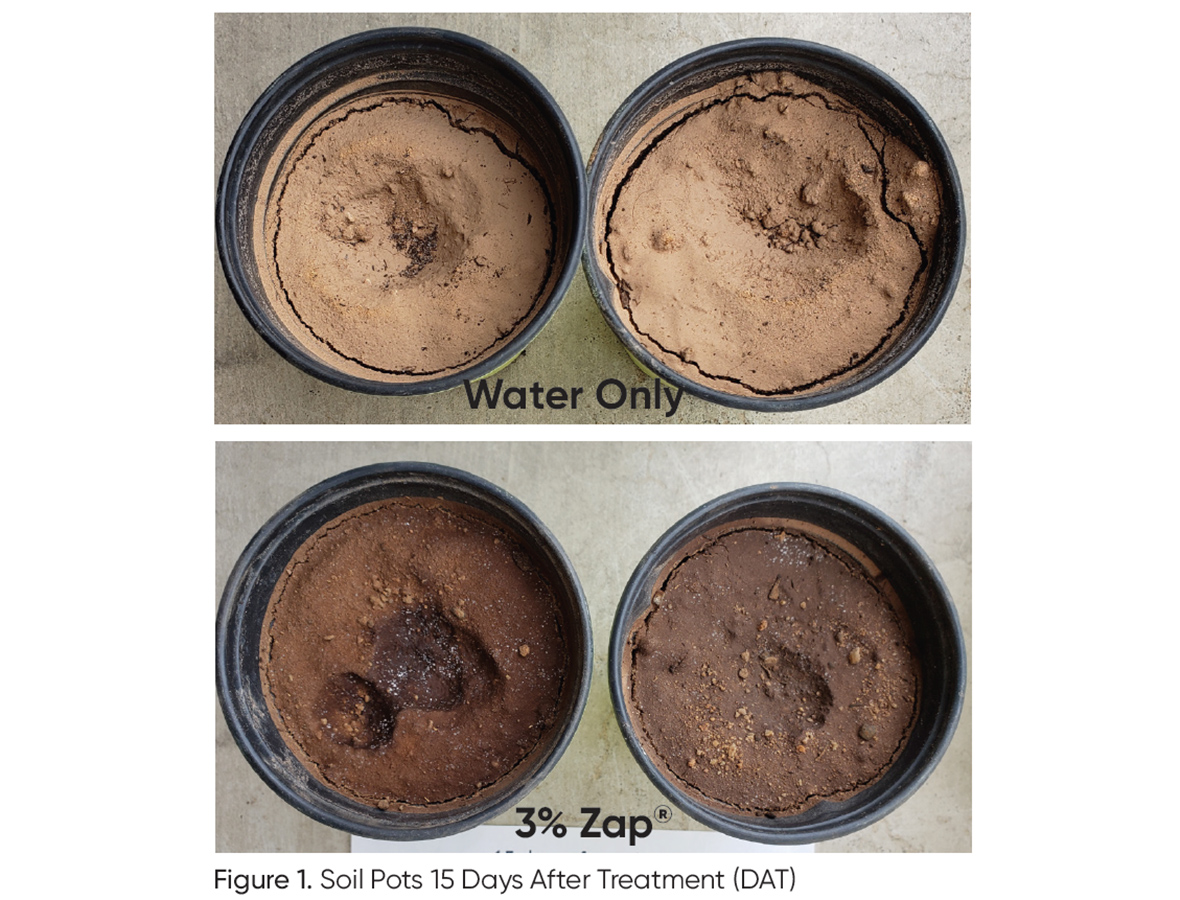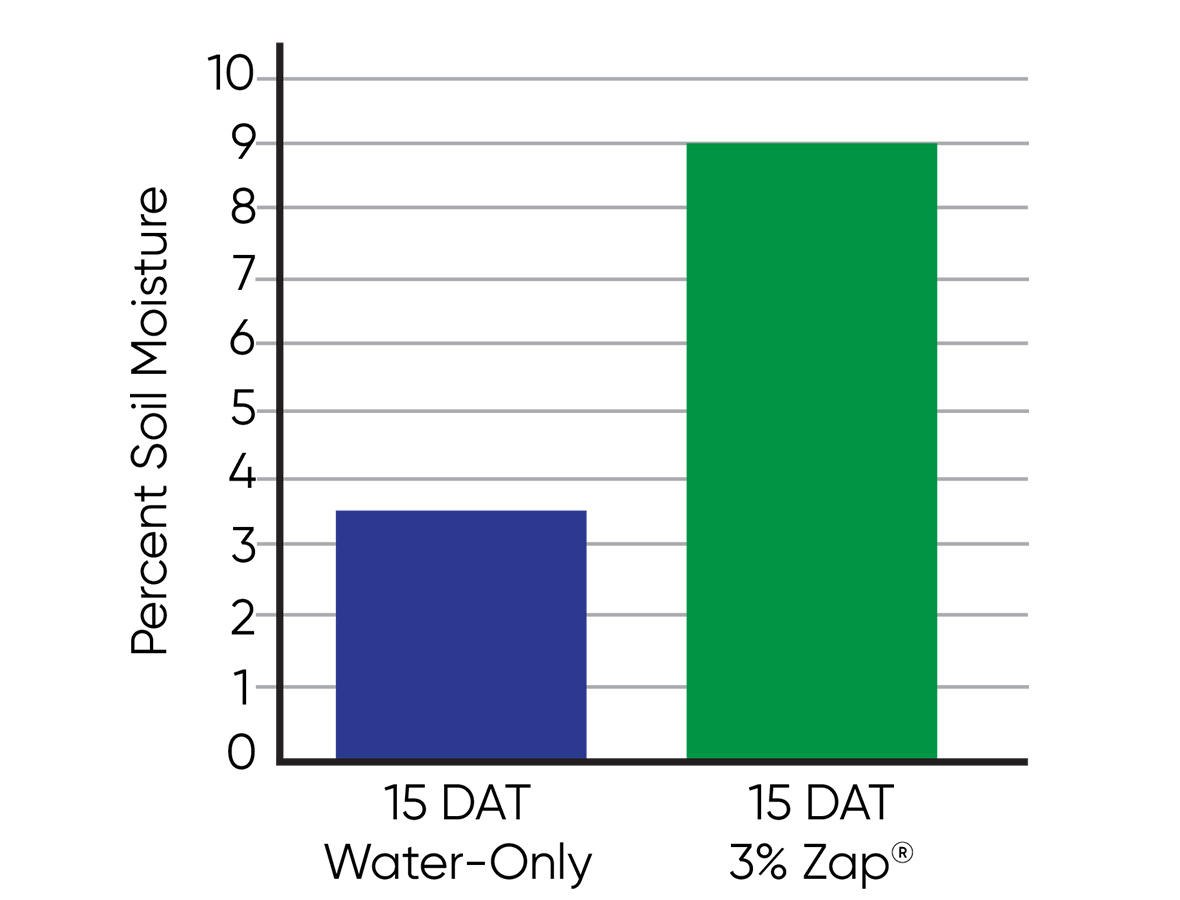Objective
Huma® Zap® has been shown to improve crop yield and soil conditions. This report illustrates some of the ways Zap® improves soil characteristics such as water-holding capacity and structure.
Materials & Methods
In this study, two sets of soil in pots were saturated with either water or 3% Zap® solution. None of the pots received any additional water for 15 days, and then soil moisture contents were measured by microwave dry oven.
Results
Fifteen days after treatment (DAT), the soil treated with 3% Zap® solution appeared much moister than the soil treated with water (Figure 1). Figure 2 shows that the soil in the 3%-Zap®-treated soil had 9% moisture while the water-only treated soil had 3% moisture.
The 3% Zap®-treated-soil appeared more structured, porous, and less compacted than the water-only-treated soil (Figure 3).

Figure 1. Soil Pots 15 Days After Treatment (DAT)

Figure 2. Percent Soil Moisture 15 Days After Treatment (DAT)

Figure 3. Soil Samples 15 Days After Treatment (DAT)
Conclusions
Zap®, which contains humic substances, increased water-holding capacity of soil by a factor of 3 when compared with water-only treated soil. More air pockets and fluffier soil were associated with the Zap®-treated soil, resulting in more water being held in Zap®-treated soil.

